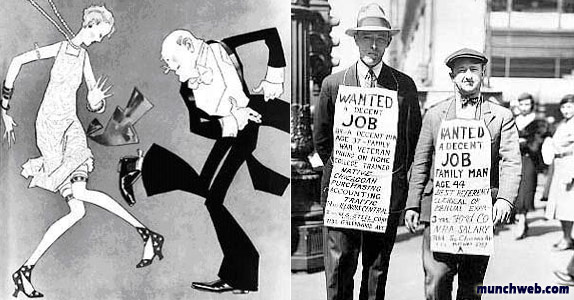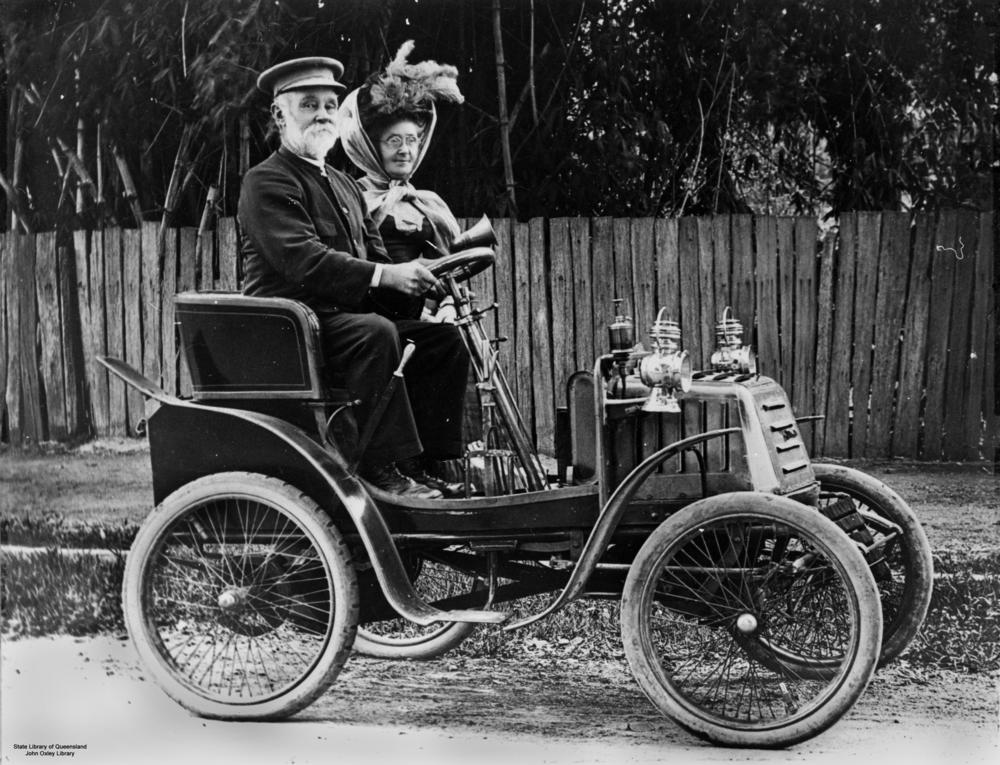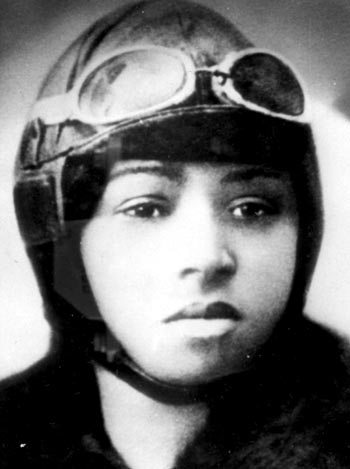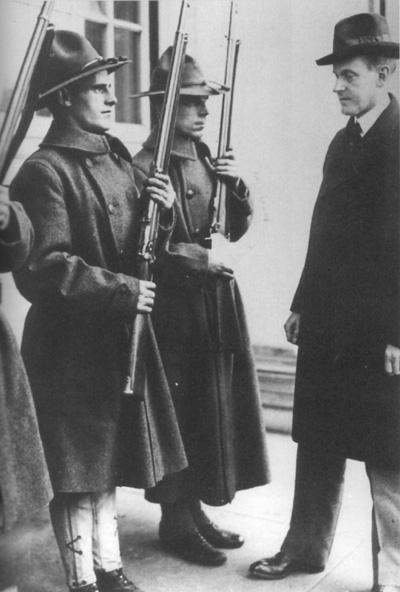Cross-Link African American Studies: The Harlem Renaissance & the Jazz Age
Image by Chris Munch
Focus Question: How did traditionalism and modernity interact throughout the 1920s?
Topics on the Page
Overview of The Roaring Twenties
Prohibition, the 18th and 21st Amendments
- LEARNING PLAN: Prohibition Era and Songs of Reform
![]() Prohibition and Music Lesson Plan
Prohibition and Music Lesson Plan
Women's Roles and Women's Suffrage
- Harry T. Burn and the Ratification of the 19th Amendment in Tennessee
The Scopes Trial
The First Red Scare
- Dramatic Event page: The Trial of Sacco & Vanzetti
- The Palmer Raids
- Emma Goldman
- The Boston Police Strike of 1919
The Rise of the Automobile
Overview
In the aftermath of World War I, many Americans desired to return to a state of "normalcy." More than ever, many Americans clung to their traditions in the hopes of restoring their pre-WWI societies.
Part of this trend was a fear of the "unknown," from groups like immigrants, minorities, radicals to new scientific discoveries. Yet America was facing it's strongest economy ever, thus a rapidly modernizing society.
Therefore, there developed a conflict between those would cling to religion, racism and nostalgic perceptions of the past and those who were engaging in cultural change.![]() Click here for Warren G. Harding's 1920 "Return to Normalcy" speech in Boston.
Click here for Warren G. Harding's 1920 "Return to Normalcy" speech in Boston.
The "Roaring Twenties"
The term "Roaring Twenties" is used to describe this period of social change, characterized by Jazz music, carefree consumer behavior and bathtub gin.
Visit "Clash of Cultures" which contains sections on Prohibition, The New Women, the Scopes Trial, Anti-Immigration and the KKK.
- View Pictures of the "Roaring 20s" from The Crash of 1929 from PBS American Experience.
- Visit Snapshot: The Decades - 1920s for an overview of the "Roaring 20s."
Click here for a game on the Roaring Twenties.
Cover of the 1922 Edition of Tales of the Jazz Age
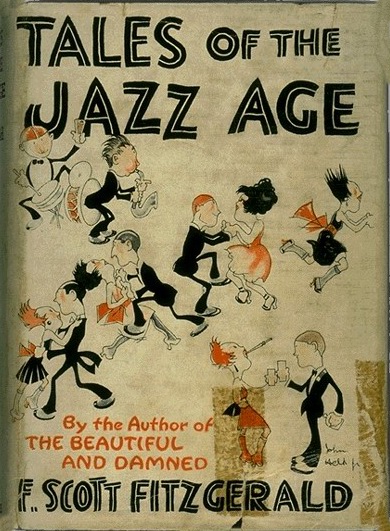
![]() The Great Gatsby: Primary Sources from the Roaring Twenties from the Library of Congress.
The Great Gatsby: Primary Sources from the Roaring Twenties from the Library of Congress.
Click here for a 15 minute video on the Roaring Twenties.
See here for a "Crash Course" video on the Roaring 20s
Changing Roles for Women
Stylish flapper girl smoking a cigarette
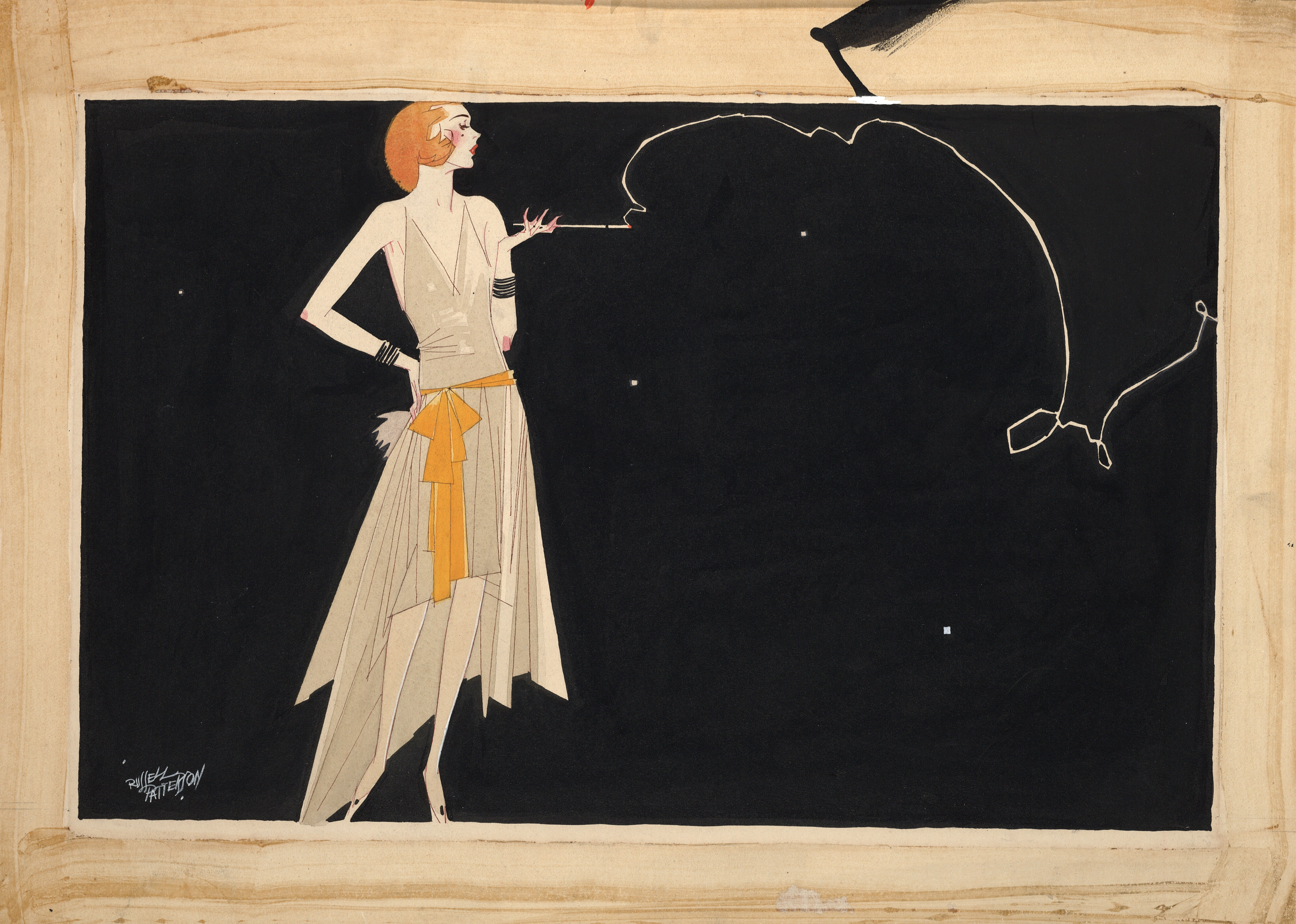
During World War I large number of the young, male labor force of the United States enlisted in the armed forces, requiring women to take up many traditionally male jobs.
- This factor undoubtedly shaped the way women saw themselves and the way that society viewed women.
- Although many women returned to the home when American men returned from war, the fact that women left their homes and successfully filled male roles left a lasting impact on society.
This Harvard collection contains a wide array of primary sources documenting the role of women in the American economy from 1800-1930.
Flappers
- Perhaps the most well-known icon of this era is the "flapper girl:" a new type of modern woman who participated in what many considered to be unladylike behavior.
- The flapper wore shapeless dresses and a short haircut, drank (even during Prohibition), smoked and treated sex casually.
- This rejection of social norms shocked society, particularly those groups and individuals fighting for tradition.
 |
| 1917 political cartoon about female suffrage |
Women's Suffrage
In 1920, the United States ratified the 19th Amendment to the Constitution, which granted women the right to vote. This was achieved after almost a century of hard-fought battles by passionate women and their male allies.
- Link here for a summary of the legal fight for the amendment.
"Don't Forget to be a Good.Boy". Harry T. Burn's Letter from Mom and the Ratification of the 19th Amendment in Tennessee
Link to The Vote That Led to the 19th Amendment
Visit here for the National Archives image of the amendment (as well as related teaching materials).
It is important to note that the effects of the 19th Amendment were not immediately felt, but that the women's movements in the 1920s laid the foundation for social change in the following decades.
Click here to learn more about women's activism and the Progressive Movement.
For a video on women's suffrage click here.
To learn more about Suffrage from the perspective of women of color click here and click here to read about how "Racism Tainted Women's Suffrage"
For a lesson plan on how to approach the subject of race and the temperance movement click here and for more comprehensive and general resources on how to approach race in the classroom click here
See Bessie Coleman Historical Biography page
Xenophobia and the Red Scare
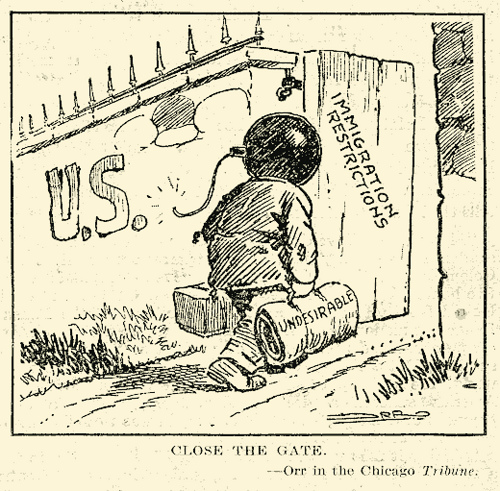
The xenophobia of the 1920’s led to anti-immigrant legislation.
- In 1924 the National Origins Act was passed.
- This act restricted immigration drastically – annual quotas were set at 2% of the ethnicities population in the U.S. at the time of the 1890 census.
- Congress chose the 1890 census as the basis because as of 1890 not many Italians and Eastern Europeans had immigrated to the U.S.
Link to The Trial of Sacco & Vanzetti
First Red Scare
- After the World War I, the U.S. government sought to purge American society of communists and communist ideology. The 1917 Bolshevik Revolution in Russia caused a major fear of communism or anything that resembled efforts to redistribute power and wealth.
- The period between 1919 and 1920, is know as the first Red Scare because it was dominated by hyper fears of communism (communists are associated with the color red).
The Palmer Raids
- Attorney General A. Mitchell Palmer played a critical role in carrying out the government’s anti-communist policies. He was convinced that communists were plotting to kill leading politicians and capitalists.
- He cracked down on communists and immigrants by raiding their headquarters and social clubs – these were called the Palmer Raids. As many as 6,000 suspects were arrested and detained without being formally charged.
- Palmer predicted that on May 1st, Socialist Labor day, there would be major demonstrations that would lead to revolution. When this did not happen, Palmer lost favor with the public, thus helping to bring a close to the first Red Scare.
For more, see The Palmer Raids with links to key primary sources

Emma Goldman
Following the Palmer raids, several hundred immigrants who were thought to be communists were shipped to Russia on a boat known as the “Soviet Ark.”
- Emma Goldman, a prominent anarchist, was one of the people deported to Russia. This link includes the entire text of her book, Anarchism and Other Essays.
- Click here for interactive resources on Emma Goldman from PBS.
Anarchism and Other Essays (1910)
The Boston Police Strike of 1919
Image to the right shows Governor and future president Calvin Coolidge inspecting troops during the Boston Police Strike.
Background Information
In 1919, 1,117 officers of the Boston Police force (made up of 1,544 men) went on strike. The police officers wanted better pay, shorter hours, and better working conditions.
- They were being paid only $1,100 a year, which was about half of what war workers had been earning. They also had to buy their own uniforms with their pay.
- They worked 10-13 hour shifts and 13 out of 14 days. Police stations were old, crowded, and dirty.
- In an effort to demand improvements, the police wanted to form a union, just as the Boston fire fighters had done.
The Police Commissioner, Edwin U. Curtis issued an order that "no members of the force shall join or belong to any organization, club, or body outside the department."
- However, the American Federation of Labor granted a charter to the police, creating the Boston Police Union.
- Curtis had the leaders placed on departmental trial and appoints a citizens committee to review the actions of the police. Neither Curtis or Mayor Andrew Peters will negotiate with the police men. Not only because of the union activity, but also because many of the men were Irish Catholic.
- When the officers went on strike, there was hardly any police force left to protect the citizens of Boston. There was mob violence and finally Governor Calvin Coolidge sent in the Massachusetts militia to break up the strike and put an end to the mob violence.
- After the strike ended, none of the striking policemen were hired back to their old positions. Instead, new officers were hired at $1,400 a year and given additional holidays and new uniforms (which they did not have to pay for).
- Coolidge justified not giving the striking officers their jobs back by saying, "There is no right to strike against the public safety by anybody, anywhere, any time." Cracking down on the strike benefited Coolidge and propelled him to the Vice Presidential nomination.
For connections to the Red Scare, see the Boston Police Strike.
See also, Russell, Francis The Strike That Made a President from AmericanHeritage.com Web site.
Racial and ethnic tensions during the 1920’s made life difficult for African-Americans and immigrants. The KKK had become a major force in politics. There is a misperception that the Klan was mainly active in the South during reconstruction. However, at that point they had to be a secret society. In the 1920s they took on a much more public role. For example, in 1922 Oregon elected a Klansman – Walter M. Pierce - to the governorship.
For More Information:
Explore the Sinking of The Titanic for information about its impact on people's thinking about technology.
Schoenherr, Steve Red Scare 1919. Retrieved April 26, 2007, from Steve Schoenherr Home Page Web site: http://history.sandiego.edu/gen/ww1/1919b.htm
South Dakota Department of Education, Retrieved April 26, 2007, from The 1920's Web site: http://doe.sd.gov/octa/ddn4learning/themeunits/1920s/general.htm
Boston Police Officers Strike. Retrieved March 26th, 2008 from:
http://www.u-s-history.com/h1348.html
http://www.massmoments.org/moment.cfm?mid=237
http://www.americanheritage.com/articles/magazine/ah/1963/6/1963_6_44s.html
Red Scare. Retrieved March 26th, 2008 from: http://www.u-s-history.com/pages/h1343.html
Sacco and Vanzetti. Retrieved March 26th, 2008 from: http://www.u-s-history.com/pages/h1397.html
